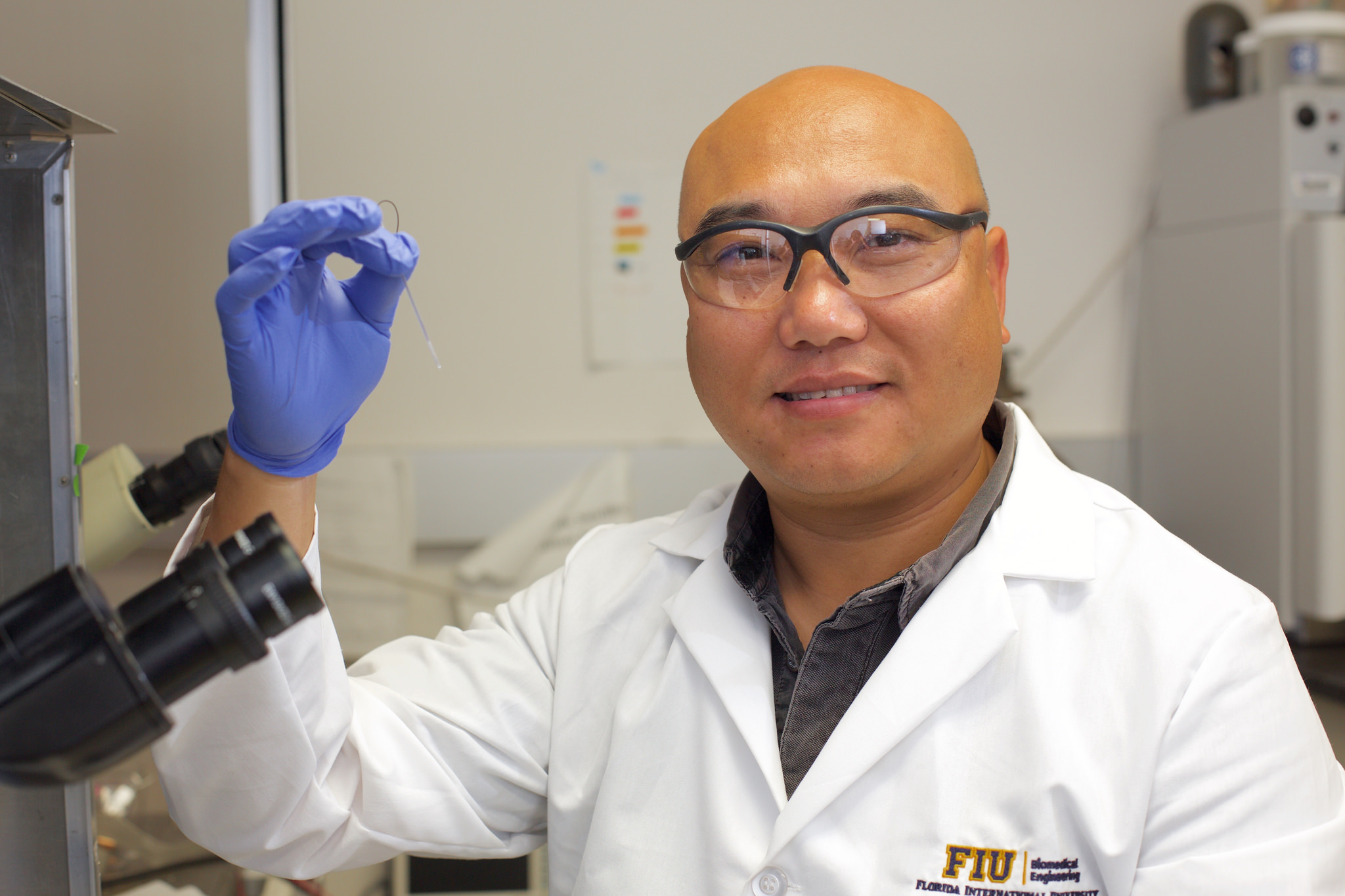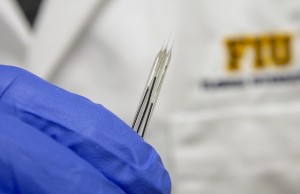When great minds work together, scientific progress can be dramatically accelerated. Such is the case for Chenzhong Li, professor of biomedical engineering at FIU, whose collaboration with John Cirrito, associate professor of neurology at Washington University School of Medicine in St. Louis, has led to significant advances in the understanding of Alzheimer’s disease.

For nearly a decade, Cirrito and his team at the Washington University Memory and Aging Project were studying how the brain regulates the release of the Abeta peptide and how this normally healthy pattern is disrupted when Alzheimer’s sets in. He was limited, however, to measuring this phenomenon only once per hour. To get a clear picture of how the brain releases and clears Abeta, Cirrito and his team needed to watch minute by minute.
 This is where Li and his revolutionary biosensing technology came in. Li’s device was an unexpected yet essential boon for moving the Alzheimer’s research forward—a biosensing technology that could monitor “minute-by-minute” responses in the brain as humans engage in different activities such as communication, reading or writing.
This is where Li and his revolutionary biosensing technology came in. Li’s device was an unexpected yet essential boon for moving the Alzheimer’s research forward—a biosensing technology that could monitor “minute-by-minute” responses in the brain as humans engage in different activities such as communication, reading or writing.
“This biosensor provides a critical tool for Alzheimer’s researchers to assess the formation of plaque in the brain, the cornerstone of Cirrito’s work and a key to understanding the disease,” says Li.
Unlocking the puzzle of Alzheimer’s
Collaborations such as Li’s and Cirrito’s could bring the scientific and medical community closer to a cure.
Alzheimer’s disease is not a normal part of aging—it is a neurological condition and is the sixth leading cause of death in the United States. With more than 5.4 million Americans suffering from Alzheimer’s and an ever-increasing aging population, forging a pathway for diagnosis and treatment is critical.
“The ability to drill down on how the brain clears Abeta peptides can help us to understand what causes the accumulation of plaque that leads to Alzheimer’s disease. If we can identify what pathways are blocked and why this dysfunction occurs, there may be potential to transfer more Abeta out of the brain pharmacologically,” Cirrito says.
Li and Cirrito have received a $900,000, five-year grant from the National Institutes of Health to further understand how the Abeta protein is cleared from the brain.
Since they began working together, Li and Cirrito have advanced the use of the biosensing technology in animal models to rapidly detect how the brain prevents the build-up of Abeta. Late last year, they presented their findings at the Society for Neuroscience Annual Meeting. While studies so far have occurred only in mice, the ultimate hope is to translate this technology into humans.
Biosensors 2.0
Li’s research looks ahead to the next generation of biosensors and to the use of such biomedical devices for neuron mapping, clinical diagnosis, “point-of-care testing,” drug screening/delivery, homeland security and other environmental applications (https://nanobio.fiu.edu/).
“Biosensors placed in the brain will have the capacity to detect in real-time the Abeta peptide that leads to cell death, cognitive dysfunction and behavioral abnormalities,” says Li.
These technologies may lead to point-of-care testing to be performed at home, in the doctor’s office or through wearable devices that anyone can use, allowing for immediate diagnosis and subsequent treatment of diseases such as Alzheimer’s.
– Lisa Rosen






